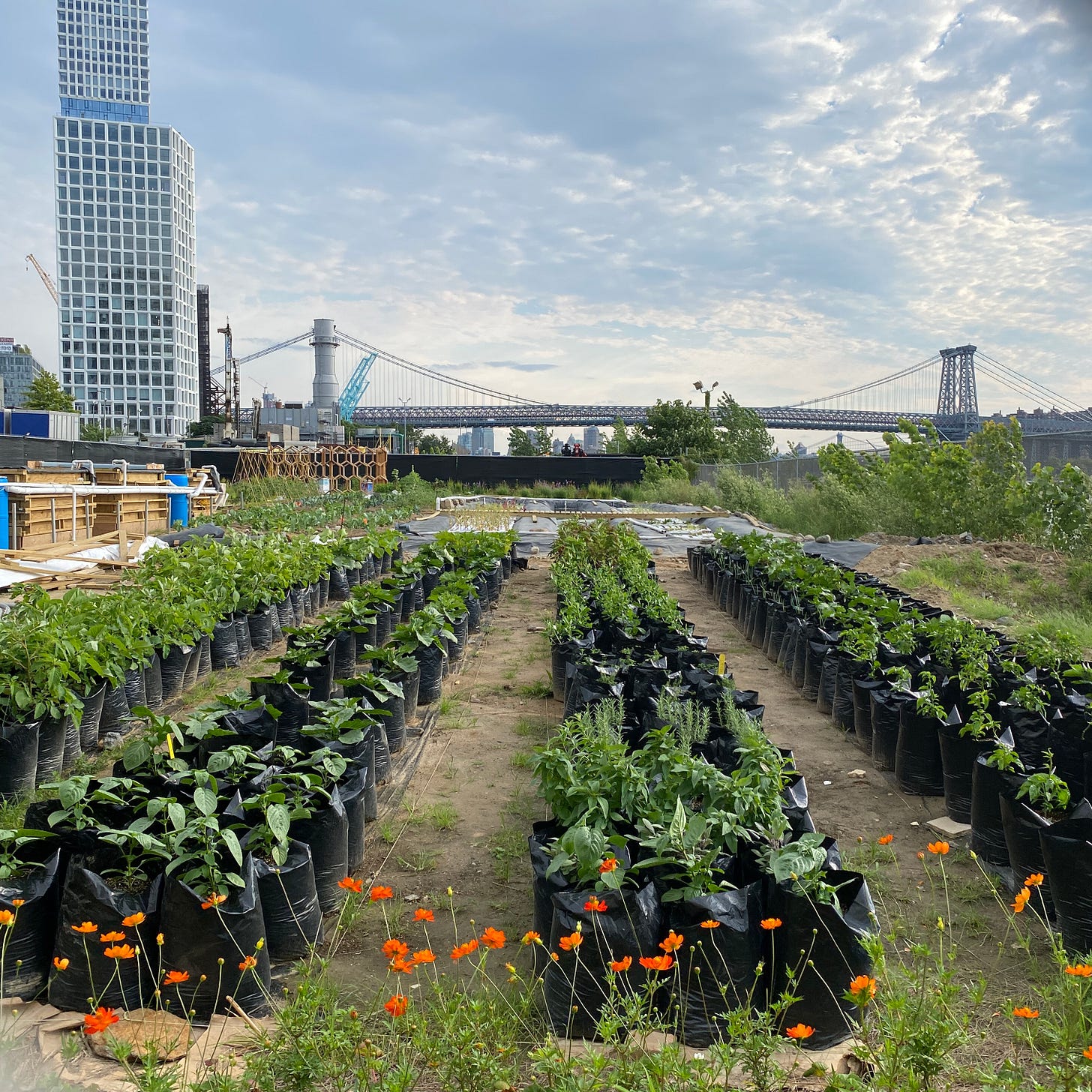There are lots of reasons why it's hard to talk about climate change in your work. It can get political, it's not core to the job description, and it’s too big to solve anyway, right? If the world gets more extreme — hotter, colder, wetter, drier, and stormier, that sucks, but so be it.
But without a habitable planet, there is no business, and none of the things that we’re so busy doing will matter.
Savvy leaders know this. A recent Wall Street Journal analysis found that the most well-run companies had numerous dedicated roles carved out to deal with climate change. Climate tech leaders and investors also know this, but the gap between many of their products and widespread adoption remains wide.
Despite all the science and analysis showing that action is needed NOW, we’re collectively dragging our feet on major changes, using excuses that are parroted in development planning, corporate prospectuses, mainstream media, advertising, and many of our own decisions. In telling ourselves and others the system is too complex to tackle, we leave it in place.
Cue: a new climate narrative.
We need people who are undeterred by the challenges and persuasive about ways to approach them. We need people to remember that stories drive action — and we need to tell clear, effective stories now more than ever.
The power of storytelling has been examined in thousands of studies in multiple disciplines, which have universally found that information presented as a story is more memorable, more meaningful, and inspires more action.
To that end, we propose some new fundamentals when talking about climate change, especially at work. We’re going to get into each fundamental in more detail in coming weeks, along with in-depth case studies on how leaders in investing, climate tech, corporate sustainability, and communications have applied these techniques successfully in a wide range of positions.
Fundamental #1: Get to know your audience
Understanding your audience is critical to effective climate storytelling. It allows you to tailor your messages in ways that resonate, engage, and motivate specific groups — and avoid things that turn them against your message.Fundamental #2: Meet them where they are
Meeting your audience where they are ensures the message is relevant, understandable, and compelling. When you meet people in a way that's not judgmental or threatening, you often skirt psychological barriers and leave way for a more productive outcome.
“I spend zero time trying to convince people that they’re wrong and that climate change exists. I just talk about how awesome all the climate solutions are. I talk about how these things are cheaper, faster, better, more convenient, and yes, more American! I say, ‘Isn’t it great that in America we have choice? And X choice is amazing, and Americans invented it!’”
–Breene Murphy, President, Carbon Collective
Fundamental #3: Give them something to move towards
Positivity / potential / opportunities / outlets / ROI. If you want to inspire action, you have to show people how to act — and how it benefits them in a meaningful way.Fundamental #4: Show, don’t tell
Showing rather than telling engages the audience more deeply, makes abstract concepts tangible, and evokes stronger emotional responses. Evocative words and descriptions, as well as visual imagery, makes ideas more relatable and memorable.Fundamental #5: Pragmatism over activism
Not everyone wants to save the world. A lot of people are just fine with the status quo, thank you. Others would like to be involved but…we’re busy.By taking a pragmatic approach, you widen the pool of people who can potentially act on your message. You also reduce the potential for backlash — if there is no cause, there is no counter-cause.
Fundamental #6: Use science, but beware of carbon blindness
There’s more to creating a livable future than carbon management, such as a steady supply of food (and better yet, nutrition), clean and abundant water, jobs and economic prosperity, and protecting homes and communities from disasters.When you’re tempted to use “sustainability” or “climate” ask yourself:
“What are we really talking about?”
“Who are we communicating with?”
“What words and ideas best overlap with what they care about AND avoid what they’re against?”
Fundamental #7: Make Numbers Relatable
Numbers can be too abstract to be meaningful —- especially big ones. Use analogies and comparisons to put them into perspective for people. Also give them context by pointing out trends and identifying percentages.
Using limited numbers in climate storytelling helps maintain clarity, emotional engagement, and accessibility for broader audiences. Overloading stories with statistics can overwhelm and alienate the audience, making it harder for them to connect with the narrative (same goes for jargon and acronyms).
Bonus: Make it fun
Adding an element of fun ultimately cues surprise for an audience, especially as most audiences associate climate storytelling with doom and gloom. It’s still a serious situation — we’re not denying that. This is a line that has to be walked carefully, but it IS possible. We’re all in this together, so let’s try to have a good time.
We’ll be back next week with a bonus issue on how to connect with your audience, and how to develop a strong narrative for your team, company or brand.
Things we loved from others:
-Arts and Climate Change newsletter by Nicole Kelner, an excellent example of joyful storytelling
-Recent Insights post by Drawdown (and their related Jobs Guide)
-The Vital Impacts environmental storytelling grant — deadline Sept. 15
-The Language of Climate Politics, by Genevieve Guenther








